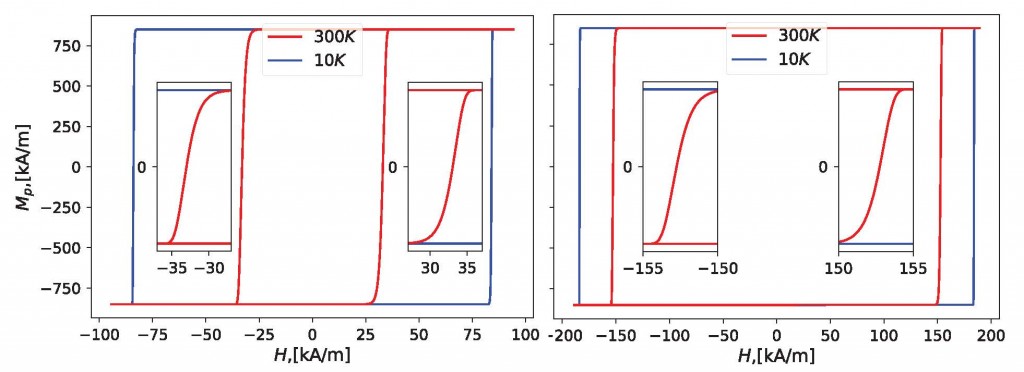NANOSYSTEMS: PHYSICS, CHEMISTRY, MATHEMATICS, 2017, 8 (6), P. 701–708
Calculations of switching field and energy barrier for magnetic islands with perpendicular anisotropy
S.Y. Liashko – ITMO University, Kronverkskiy, 49, St. Petersburg, 197101, Russia; Science Institute and Faculty of Physical Sciences, Univ. of Iceland 107 Reykjavík, Iceland; serjfv@gmail.com
H. Jónsson – Science Institute and Faculty of Physical Sciences, Univ. of Iceland 107 Reykjavík, Iceland; Center for Nonlinear Studies, Los Alamos, NM 87545, USA; hj@hi.is
V. M. Uzdin – ITMO University, Kronverkskiy, 49, St. Petersburg; St. Petersburg State University, St. Petersburg, 198504, Russia; v_uzdin@mail.ru
Calculations of the magnetic field required to reverse the magnetization of islands with out-of-plane anisotropy are carried out using a model
describing nucleation followed by rapid domain wall motion. The calculations are based on an extension of the Stoner–Wohlfarth model where thermal activation is taken into account as well as the applied magnetic field. The calculated switching field distribution (SFD) is compared with recently reported experimental measurements of de Vries et al. [New J. Phys. 19, 093019 (2017)] on circular 220 nm CoPt islands. The measured results can be closely reproduced by choosing appropriate values of two parameters, the nucleation volume, and the effective anisotropy. Both the position of SDF peaks and their width at high and low temperature, 300K and 10 K, are amply described using the same set of parameter values for a given island, while there is a large difference between islands with weak and strong magnetic anisotropies. There is no need to introduce the temperature dependence of the activation energy at zero field. This is in contrast with the estimates obtained from the so-called diamond model used by de Vries et al. in their data analysis where multiple adjustable parameters are introduced, and a three- to four-fold change in the zero field activation energy is invoked.
Keywords: activation volume, pre-exponential factor, magnetic islands, activation energy, rate theory, spin ice.
DOI 10.17586/2220-8054-2017-8-6-701-708
